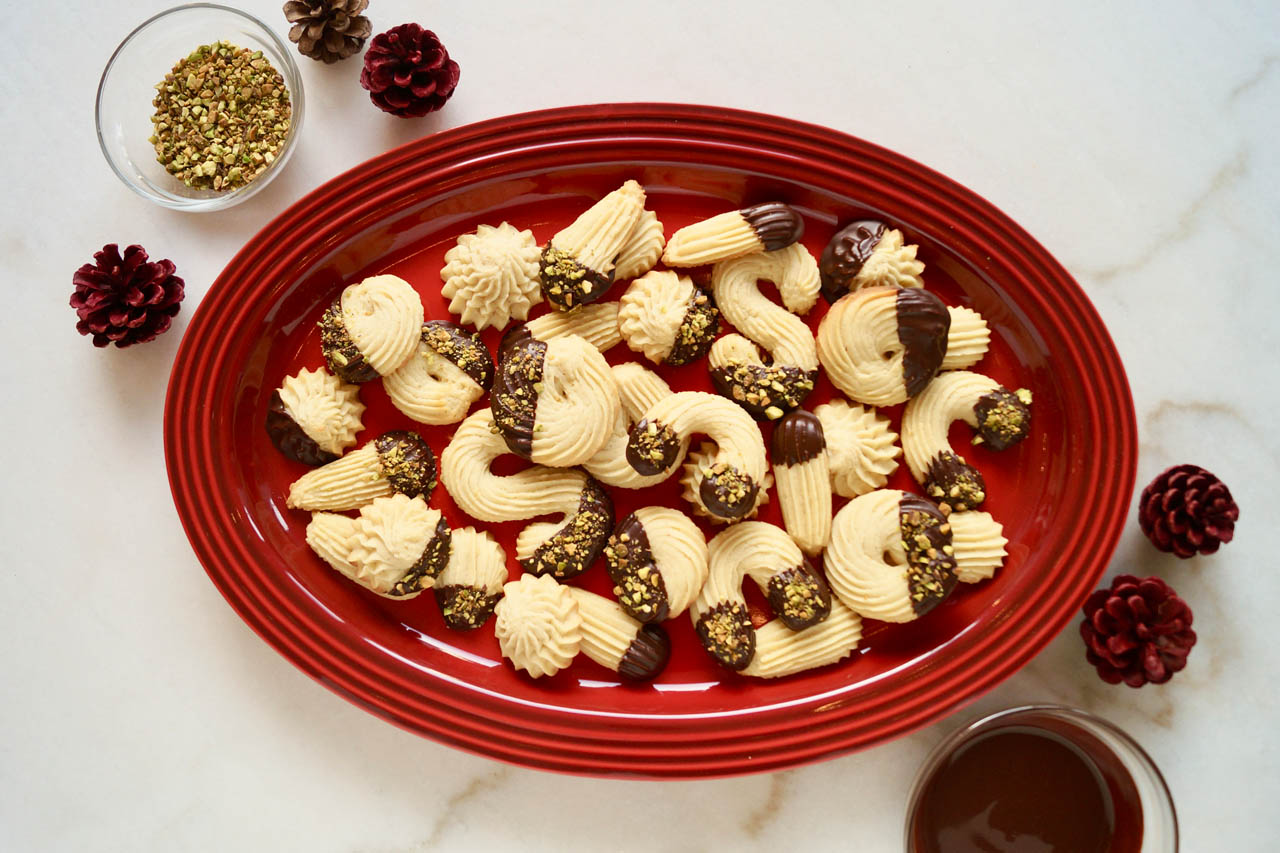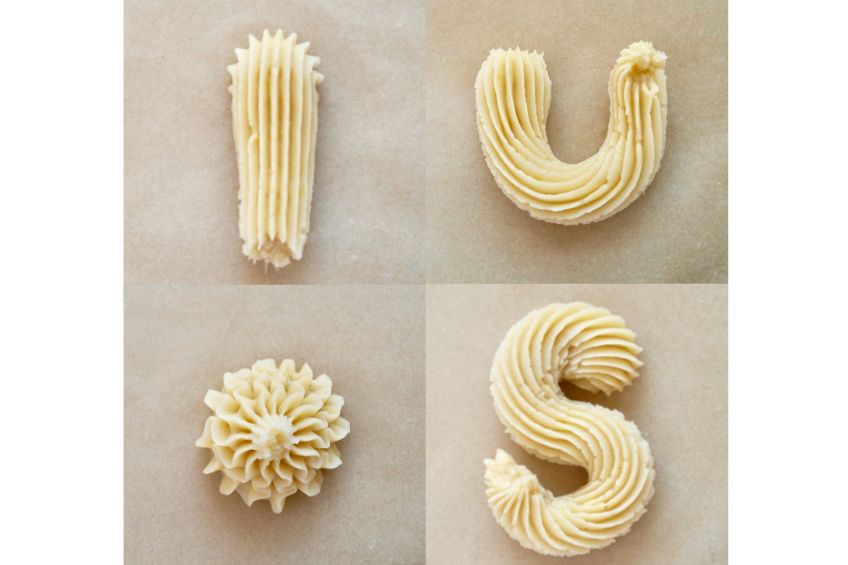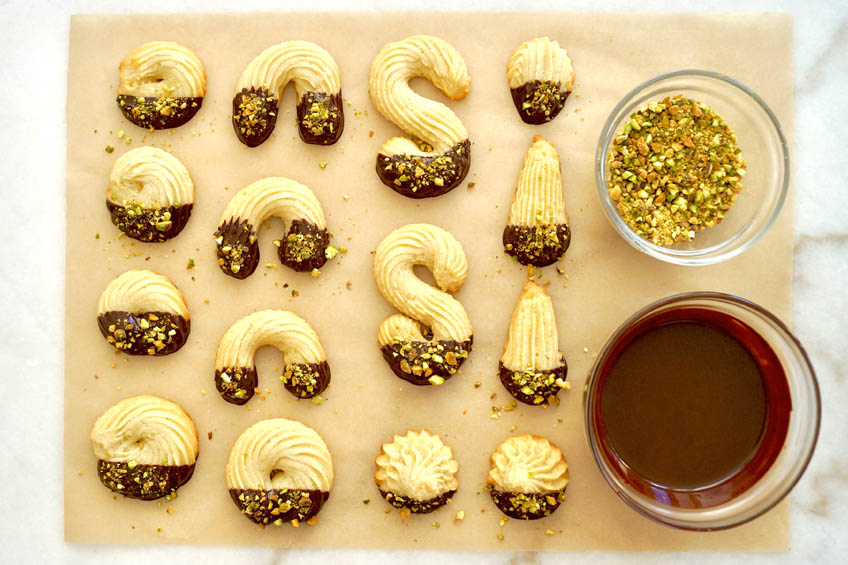
Lightly flavoured with lemon, vanilla and almond, these tender spritz cookies are a German Christmas classic and for good reason! They are buttery, soft, and make the perfect addition to any holiday cookie tin. Traditionally, Spritzgebäck was made by extruding the dough through a meat grinder fitted with a special cookie attachment, giving them their unique texture. Nowadays it’s easier to achieve the same effect using a piping bag fitted with a star tip.
Although these cookies are simple in terms of ingredients, it’s important to follow each step carefully to make sure they hold their shape as they bake. Once dipped in chocolate, they can be stored in an airtight container for a week in the fridge but, I doubt they’ll last that long!
Related: Gingerbread Spiced Shortbread Wreath Cookies Are Seriously Adorable
ingredients
directions

Fit a piping bag with a large open star tip (I used Wilton #6B open star tip). Line two large baking sheets with parchment paper and set aside. Make sure you have room in your fridge to fit both sheets (if not, you can pipe your cookies closely together on one sheet and then quickly redistribute them after they have fully chilled.)
In the bowl of a stand mixer fitted with a paddle attachment (or in a large bowl with a hand mixer), cream butter, powdered sugar, lemon zest and salt together for 2-3 minutes until smooth and fluffy.
Scrape down the sides of the bowl. Add the egg and vanilla and almond extracts and mix on high for another 1-2 minutes until combined, scraping the sides down again as needed. It’s okay if the mixture doesn’t fully come together because it will in the next step.
Reduce the speed to low before adding the flour. Mix until the dough just comes together. Add the milk and beat again until fully combined. Be careful not to overmix.
The dough needs to be firm enough to hold its shape but soft enough to be piped. Test the consistency by filling your piping bag with a small amount of batter and piping a test cookie. If the dough comes out smoothly, tightly pack your piping bag with half of the batter. If not, you will have to return the dough to the mixer and beat in another teaspoon of milk.
Pipe your cookie shapes out evenly and firmly on the pre-lined baking sheets an inch apart, refilling the piping bag as needed. If you find the parchment paper is slipping around as you pipe, you can anchor it by putting a little blob of cookie dough in each corner of the baking sheet before lining it with parchment paper. To make S, U and other simple line shapes, apply firm pressure as you trace the shape with your piping tip, stop and pull the tip away horizontally to finish. To make rosettes, hold the piping bag perpendicular to the baking sheet, press down evenly without moving the tip and then finish by twisting as you pull away. If you want to make multiple shapes, group small and big ones together on separate trays since they will take different times to bake.

Once piped, chill cookies in the fridge for 1-2 hours.
Preheat oven to 350°F. Bake cookies on the middle rack for 12-15 minutes until the edges are a light brown.
Let cookies cool slightly, then transfer to a wire rack.

Once the cookies have completely cooled, melt chocolate in a small heatproof bowl in the microwave in 15 second bursts, stirring thoroughly between each until fully melted.
Line a baking sheet with parchment paper. Dip a third of the cookies in the chocolate, let the excess drip off and place them on the baking sheet. Sprinkle with chopped nuts (optional). Allow to cool for an hour at room temperature.

